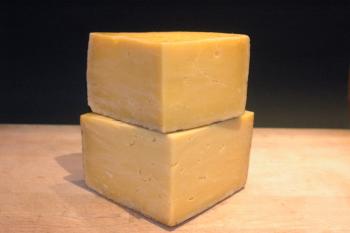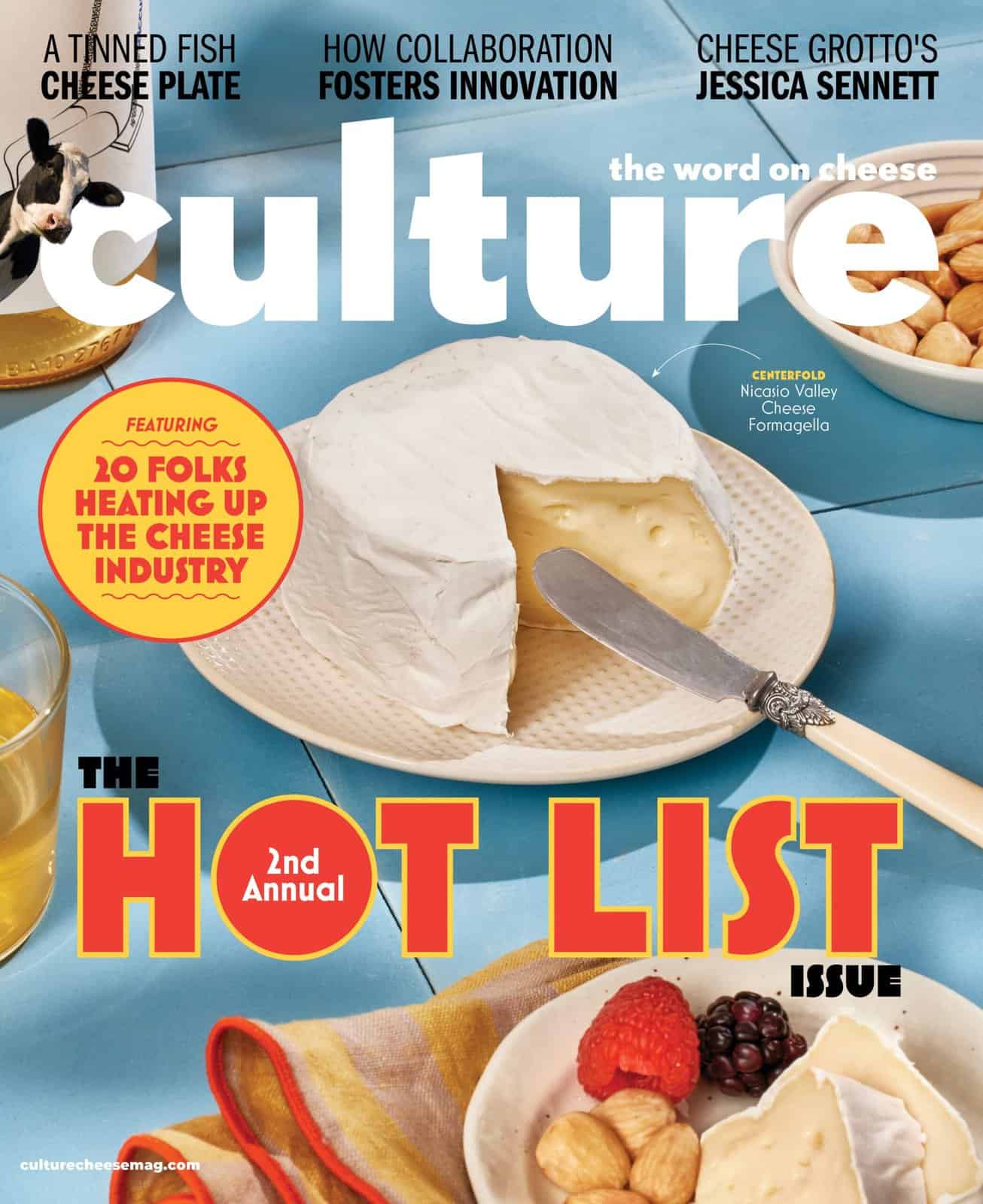Lincolnshire Poacher
- Producer
- Lincolnshire Poacher Cheese
- Country
- United Kingdom
- Region
- Lincolnshire
- Size
- 12 ins diameter, 12 ins high
- Weight
- 44 lbs
- Website
- www.lincolnshirepoachercheese.com
- Milk
- Cow
- Classification
- Firm
- Rennet
- Animal
- Rind
- Natural

Lincolnshire Poacher is produced by brothers Tim and Simon Jones at their farm at Ulceby Grange, near Alford, on the eastern edge of the Lincolnshire Wolds in England.
The farm has been in the family since 1917 and Tim and Simon are the fourth generation to run the business. Although dairying started at Ulceby Grange in the 1970's, it wasn't until later that Simon began to experiment with cheese production.
Lincolnshire is not renowned as dairying country. However, the farm is situated in an unusually chalky area that makes for excellent grazing and successful milk production. Milk comes from their own herd of Friesian cows.
With the assistance of Welsh cheesemaker Dougal Campbell, creator and producer of Tyn Gryg, cheesemaking at Ulceby Grange started in 1992. The cheese was so well received, that in 1995 the brothers expanded the creamery and hired Richard Tagg to be their full time cheesemaker. Richard is still head cheesemaker.
Produced in hefty 44lb. cyclinders, Lincolnshire Poacher is largely based on a traditional, Somerset cheddar recipe, although with certain small differences. Warm milk from each morning's milking is combined in the vat with cooled milk from the previous evening.
After adding starter culture and traditional rennet, the milk coagulates and is cut to release much of the whey. After further stirring, the curds are "cheddared" (ie cut into blocks and stacked) and salted before being transferred into cheese molds.
Cheeses are pressed in their molds for 36 hours and matured in temperature and humidity controlled maturing rooms for between 12-24 months.
Unlike its cloth wrapped cheddar counterparts, Lincolnshire Poacher has a very firm, natural rind that protects the paste of the cheese. The rind is a mottled brown and gray color with a smooth surface.
The interior of the cheese is a golden, staw-colored yellow, becoming slightly darker towards the rind. The paste has a smooth texture with no "eyes" (holes).
Flavors are of fruit, with occasional tastes of pineapple as well as toasted nuts and grass.



